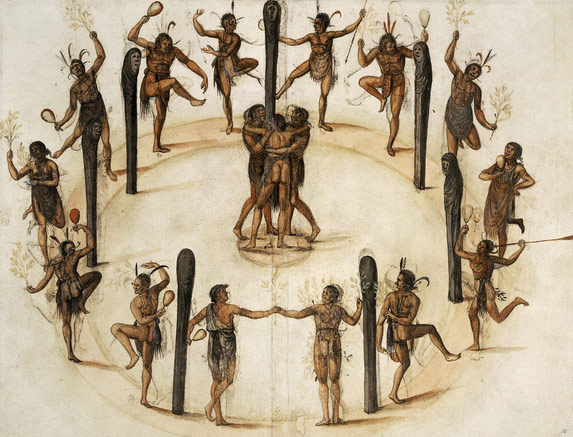Study Guide Social Hierarchies

Table of Contents
Pawwaws and Pniesok
In addition to civil rulers (sachems), Algonquian communities relied upon religious and military leaders to help run their communities. Pniese (pl. pniesok) were warrior-counselors who gained their authority by virtue of having receiving a vision or dream of Hobbamock (Simmons 6, 37-41). The word pawwaw (also spelled powwow or powah) refers to both a religious ceremony (such as the one to the right) and to the shaman who led such ceremonies. To distinguish between the two in the Indian Converts Collection Website and the book Indian Converts, I use the spelling pawwaw to refer to the shaman and “powwow” to refer to the ceremony. These shamans provoked great fear in the Puritan colonists who often associated their powers with witchcraft. It is useful to remember that not all Wampanoags on Martha's Vineyard found Calvinism to be a useful or acceptable solution to the crisis caused by modernization and disease. Thus they continued to practice the polytheist religion that dominated island life before the arrival of the English and to follow the lead of traditional practitioners such as the pawwaws long after the Mayhews arrived. Traditionalists attempted to heal the community by restoring balance to a world disrupted by social change. Although no religion is stagnant, Wampanoag polytheism differed from Puritanism is four key ways: (1) they worshipped thirty-six manitous; (2) Wampanoag traditionalism was primarily relational, whereas Puritanism is congregational; (3) religious leaders such as powwows and pniesok played an important role in tribal politics and helped cement the power of the sachems; (4) religious credentials were gained through divine revelation, not book learning. For more on these four differences, see pages 36-37 of Indian Converts. |
|
Items Related to Pawwaws and Pniesok in the Archive
Sachems and Royal Families < Previous | Next > Resident Non-Members, Slaves, and Servants
